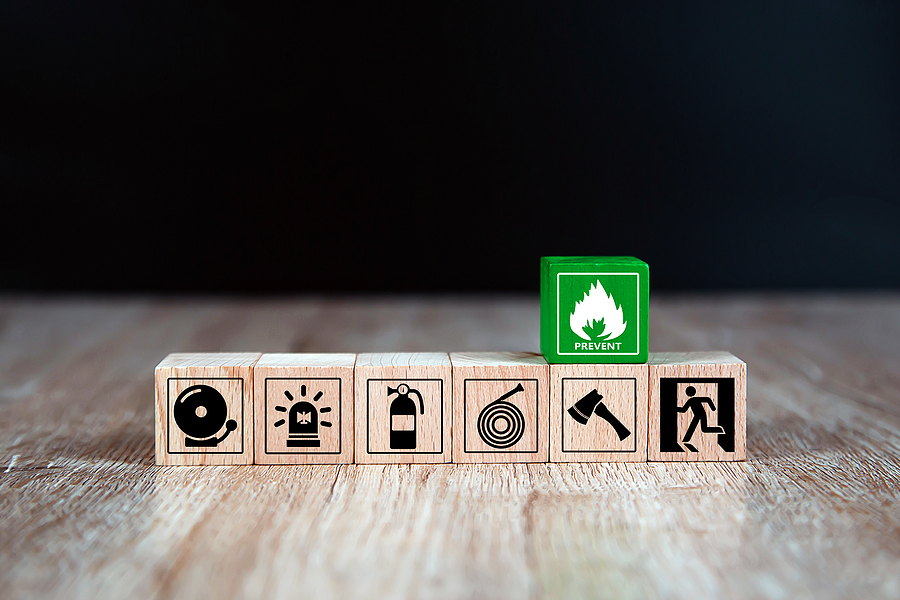Quiz: Test Your Fire Safety Knowledge

The Fire Department City of New York (FDNY) responds to more than 2,000 structural fires (those that occur in buildings) each month. Hopefully, you’ll never be involved in such an incident, but fire safety knowledge can help you be better prepared.
How savvy are you when it comes to fire safety? Take this quiz and test your knowledge.
Even if you don’t get a perfect score, you’ll be better equipped to handle the situation if it occurs.
Fire Safety Quiz
1. In the event of a fire, you should:
(a) Alert the fire services, then escape
(b) Check for the source of the fire
(c) Escape and then alert the fire services
2. The leading cause of fire death is:
(a) Burns
(b) Asphyxiation
(c) Falling structures
3. Chimneys should be higher than the roof by:
(a) At least 2 feet
(b) At least 3 feet
(c) At least 4 feet
4. Place smoke alarms directly on the ceiling or on the wall. If on the wall, place smoke alarms:
(a) 1 to 3 inches from the ceiling
(b) 4 to 12 inches from the ceiling
(c) 15 to 20 inches from the ceiling
5. Cords and plugs are the cause of:
(a) 72% of home electric fire deaths
(b) 5% of home electric fire deaths
(c) 28% of home electric fire deaths
6. Have your heating systems serviced:
(a) Every 3 months between seasons
(b) Once a year before winter
(c) Once every 3 years
7. The leading cause of fire in winter:
(a) Heating equipment
(b) Candles
(c) Cooking
8. Check closed doors for heat before opening using:
(a) The back of your hand
(b) The palm of your hand
(c) The tips of your fingers
9. If your clothes catch on fire, you should:
(a) Try to remove them
(b) Run and get water
(e) Stop, drop and roll
10. As you leave a fire, you should:
(a) Close doors behind you
(b) Leave doors open behind you
11. If escaping smoke, air is cleanest at:
(a) Three feet above the floor
(b) One to two feet above the floor
(c) Floor level
12. If there is a microwave or oven fire:
(a) Open the door to stop the fire
(b) Keep the door closed
13. The number-one cause of home fires is:
(a) Electrical
(b) Cooking
14. When sleeping, leave your bedroom door:
(a) Closed
(b) Open
15. The majority of home fire deaths occur:
(a) Between 10 p.m. and 6 a.m.
(b) Between 6 a.m. and 10 p.m.
Fire Safety Quiz Answers
Let’s see you how you did:
- In the event of a fire, you should (c) escape and then alert the fire services.
- The leading cause of fire death is (b) asphyxiation.
- Chimneys should be higher than the roof by (b) at least 3 feet.
- Place smoke alarms directly on the ceiling or on the wall. If on the wall, place smoke alarms (b) 4 to 12 inches from the ceiling.
- Cords and plugs are the cause of (c) 33% of home electric fire deaths.*
- Have your heating system serviced (b) once a year before winter.
- The leading cause of fire in winter is (a) heating equipment.
- Check closed doors for heat before opening using (a) the back of your hand.
- If your clothes catch on fire, you should (c) stop, drop and roll.
- As you leave a fire, you should (a) close doors behind you.
- If escaping smoke, air is cleanest at (b) one to two feet above the floor.
- If there is a microwave or oven fire, (b) keep the door closed.
- The number-one cause of home fires is (b) cooking.
- When sleeping, leave your bedroom door (a) closed.
- The majority of home fire deaths occur (a) between 10 p.m. and 6 a.m.
Special thanks to the Distinguished Program Group for this fun, useful fire safety quiz.
* Updated per “Home Electrical Fires,” Richard Campbell, March 2019, National Fire Protection Association (NFPA)


